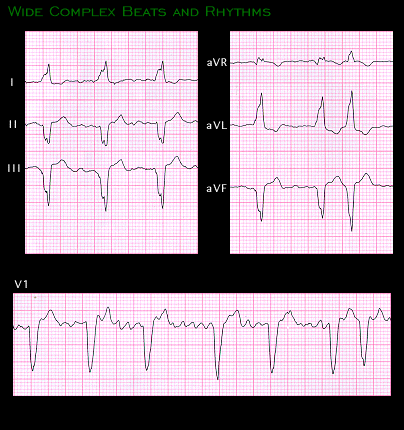The QRS complexes in atrial fibrillation, and in the other supraventricular arrhythmias, are usually of normal shape and duration because the impulses arise in the atria and travel normally through the AV junction and the ventricular conducting system to activate the ventricles. For this reason, they are referred to as “narrow (QRS) complex beats and rhythms”. However, when there is an intraventricular conduction disturbance, as exemplified by preexisting bundle branch or fascicular blocks, aberrant ventricular conduction or ventricular pre-excitation, or when the impulses arise in the ventricles, the QRS complexes will be prolonged and of abnormal morphology. These are referred to as “wide (QRS) complex beats and rhythms".

The ECG shown here is from a 70 year old female with atrial fibrillation and wide QRS complexes due to left bundle branch block. The diagnosis is reasonably straightforward because of the irregularly irregular rhythm, the easily recognized fibrillatory waves and the characteristic left bundle branch block morphology of the QRS complexes.
